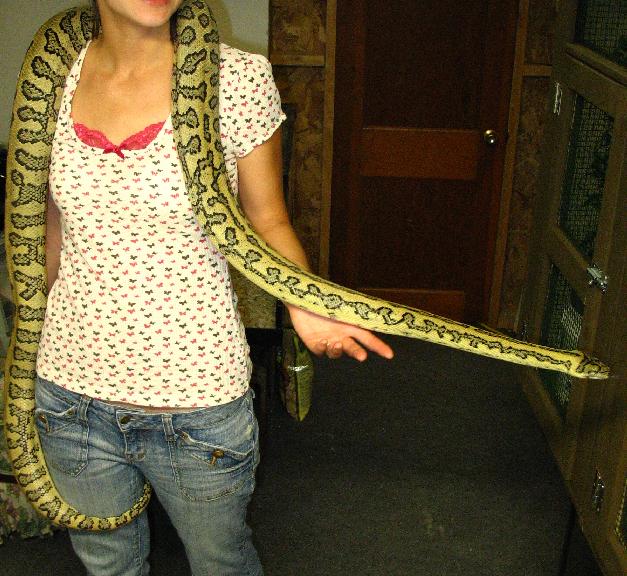 carpet pythons as pets::In response to many requests for information concerning the captive care of this popular pet snake rainforest adventures is providing the following suggested guidelines for the captive care of the pet ball python.
carpet pythons as pets::In response to many requests for information concerning the captive care of this popular pet snake rainforest adventures is providing the following suggested guidelines for the captive care of the pet ball python.So you want to keep a pet ball python?
Arguably this is one of the best snakes for the average person to keep as a pet is the african ball python.
Small size, even temper, and general ease of care make this snake a logical choice for both beginners and experienced keepers alike.
In this article we will address the basic needs and requirements to successfully keep a pet ball python.
The primary areas that will address here are: a native of west central africa, the ball python is full grown at approximately four feet in length.
There is some dimorphism between the males and females with females tending to be slightly longer and more heavy bodied than males.
These snakes are relatively docile and rarely bite.
There are essentially two ways to purchase a baby ball python; wild caught animals, and captive born babies.
We will take a look at both options here are provide our opinion on which we feel is best.
Ball pythons are still imported into the united states from west africa in very large numbers.
The eggs, and or gravid adults are collected in the wild and the eggs are incubated by individuals in africa.
Once the babies hatch they are shipped to the united states as well as other countries.
As a general rule the imports are newly hatched animals from benin, togo and ghana.
The babies all arrive at roughly the same time every year.
Often priced very inexpensively the baby ball pythons are generally available for several weeks per year.
It is our belief that you should not purchase newly imported babies as the pressure placed on the wild stocks of animals is having substantial negative impacts.
The other ball pythons that are available are those that are actually born in captivity.
Typically these pythons are hatched by individual hobbyists, or breeders and then resold to the pet stores or are available for resale by the breeder themselves at pet shows.
The pythons are generally much healthier and adjusted to feeding than a wild caught animal.
When you enter the petstore to make your purchase, take notice of the cages.
Generally, clean cages house healthy animals.
Look at the cages closely.
If the tank is super clean with no signs of feces: ask to see the snake eat before you purchase it.
In the wild, ball pythons go off feed when food is scarce.
They also may not eat mice if the snake is wild caught.
Ball pythons may quit eating for any number of reasons.
If there is any question ask to see it eat.
If the cage is clean, take a close look at the snake for visible signs of disease or parasites.
Avoid snakes that have sores in their mouth.
After checking the mouth, slide your fingers along the spine to check for any lumps or bumps.
Look very closely at its body for any ticks or mites.
If you see one, there are probably more.
Mites can be even harder to see.
Mites will gather around the eyes and mouth, or that may just be the easiest place to see them.
They look like tiny bugs or little specks moving around on the snake.
A snake with mites should be treated before the infestation worsens.
Check the anal scale to be sure it lies flat against the body and there are no visible signs of crusty matter or smears of diarrhea.
I believe captive born hatchlings make the best pets.
carpet pythons as pets::They are semiarboreal, so need climbing space,
and have more stringent humidity requirements or they will have
difficulty shedding carpet pythons as pets
No comments:
Post a Comment